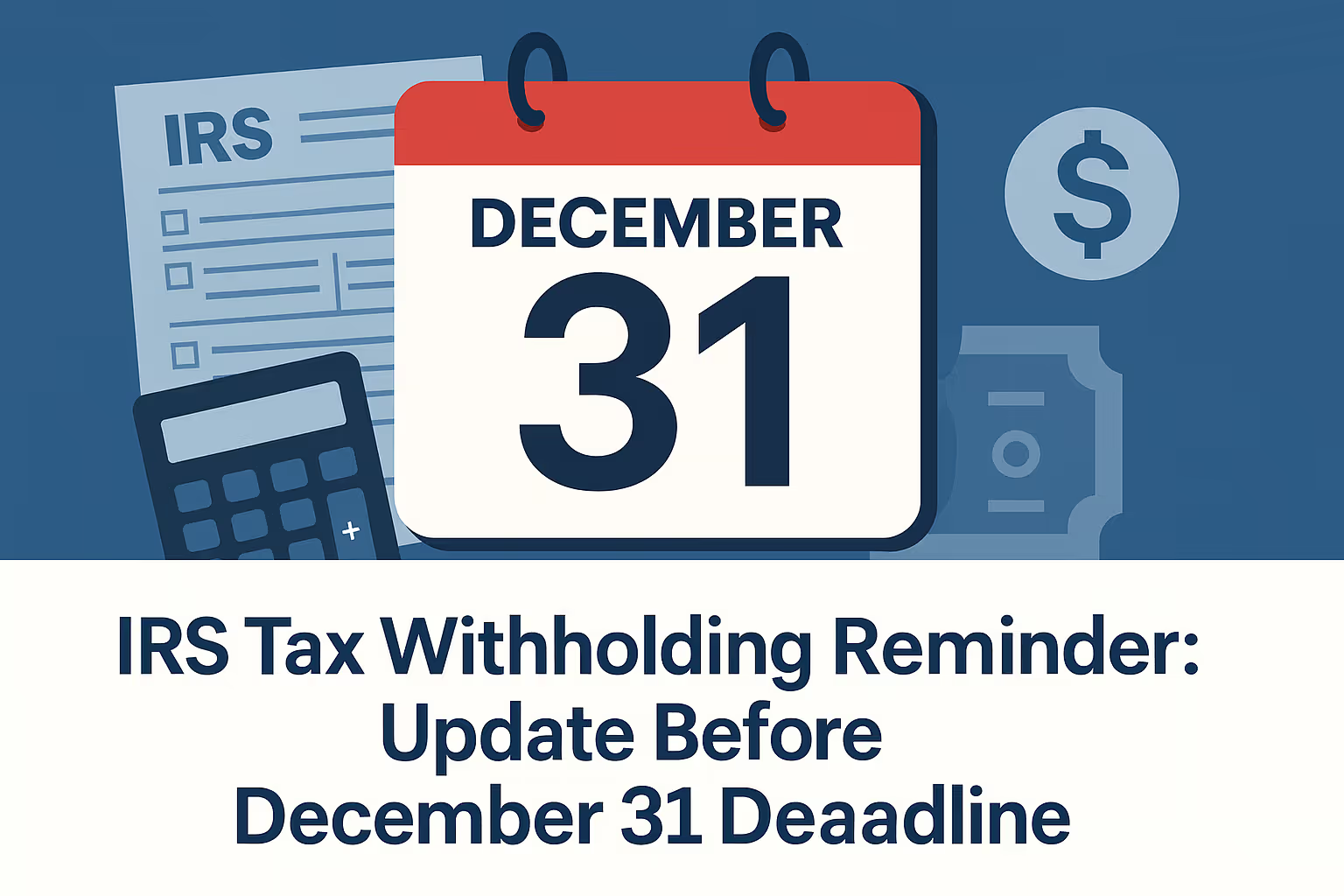
The Internal Revenue Service (IRS) reminds taxpayers to review their federal income tax withholding before the year ends. Adjustments made by December 31, 2025, can prevent surprise tax bills or oversized refunds at tax time. The agency urges workers to use official tools to withhold the correct amount from each paycheck.
The U.S. tax system runs on a “pay-as-you-go” model, meaning federal tax is collected gradually throughout the year. For most employees, this happens automatically through tax withholding, where money is taken directly from an employee’s paycheck each pay period. The amount withheld is based on filing status, wages, and any withholding allowances claimed on Form W-4.
If too little is withheld, taxpayers risk a larger balance due. However, if too much is withheld, they may face a smaller refund and less take-home pay during the year.
Workers who need to adjust their federal tax withholding must file a new Form W-4 with their employer. This form determines the withholding amount taken from each paycheck and is the main way to change your tax status during the year. Updates may be necessary after significant life changes such as marriage, divorce, having a child, or starting a new job. Most employees can complete the IRS form online or through payroll systems, and the updates ensure the correct amount is withheld to avoid an unexpected tax bill.
To guide taxpayers, the IRS offers a free tax withholding estimator that shows whether the amount withheld from your paycheck matches your expected income tax obligations. The tool provides an estimated withholding amount and illustrates how adjustments on Form W-4 affect take-home pay. It benefits workers with multiple jobs, households with dual incomes, or those with self-employment and additional income. The IRS advises taxpayers to gather recent pay stubs and last year’s return to ensure accurate results when checking how much tax should be withheld.
The amount of federal tax a person owes depends on their total income, filing status, and available tax credits, such as the child tax credit or earned income credit. These factors shape an individual’s overall tax liability, representing the total income subject to withholding. While the standard deduction reduces taxable income for most employees, those with additional income from investments or self-employment may face higher obligations. Reviewing withholdings regularly helps taxpayers ensure the correct amount is collected before tax time, avoiding penalties or a surprise bill.
Most employees are automatically subject to withholding, meaning part of their regular pay is set aside to cover federal income tax. This includes workers with full-time jobs, those holding multiple jobs, and married couples filing jointly. Certain groups, such as nonresident aliens or individuals with complex withholding use, may face different rules under tax law.
Taxpayers may face a larger balance due at tax time if too little is withheld. On the other hand, over-withholding can result in a smaller refund and reduced take-home pay during the calendar year.
Failing to adjust your withholding amount before year-end can create problems at tax time. Workers may face an unexpected tax bill or a larger balance due if not enough was withheld from their paycheck. Others may receive a smaller refund, meaning they gave the government more money than necessary throughout the calendar year.
Updating Form W-4 or submitting a new form to your employer allows you to correct your federal tax withholding. The IRS notes that changes made after December 31 will only apply to the following year, making it essential to act now.
The IRS urges taxpayers to complete a paycheck checkup before December 31 to ensure the correct federal tax amount is withheld. If the tax withholding estimator suggests changes, workers should file a new Form W-4 with their employer to adjust the withholding allowances claimed. Those with self-employment or significant additional income may need to make estimated payments to cover their tax liability. Acting now helps taxpayers avoid a surprise tax bill, reduces the chance of penalties, and ensures a smoother process when tax time arrives in the next calendar year.
Taxpayers can find more details and tools directly from the IRS:
By William Mc Lee, Editor-in-Chief & Tax Expert—Get Tax Relief Now